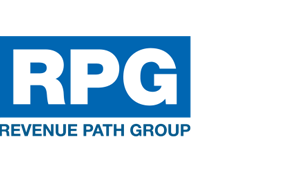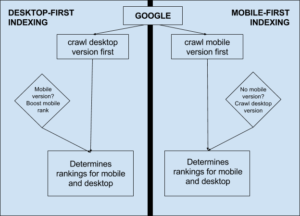The Often Overlooked But Critical Difference Between B2C And B2B Branding
There are a lot of branding agencies out there doing brilliant work when it comes to building websites, creating fonts, designing logos, and organizing brand platforms for Business to Consumer (B2C) environments. Many agencies are applying the same expertise and proven approach in Business to Business (B2B) environments.
The problem is, in the B2B world, there’s a missing link: The Intermediary.
The Intermediary
The sales person, the business development team, and the seller doer… they’re the ones actually responsible for winning the business. They’re the ones carrying the brand banner and telling the brand story. They’re the ones focused on the last mile.
This is a CRITICAL distinction that has to drive a very different approach to B2B branding. A B2B brand cannot stand alone.
Enhancing your digital presence is a great idea, but are your intermediaries delivering the same message? Can they even clearly articulate what that message is?
Building a great reputation is important, but what specifically does that reputation do to eliminate the threatsThreats What the primitive brain will act on. Whether real or perceived, the brain prioritizes acting on threats above and beyond any other action. This hurts sellers who are unable to connect the real impact of their product/service to a prospect’s threats. your prospect faces in their day-to-day business life?
Visibility is critical, but what does your brand mean to your prospect? Is your brand about you or is it about them?
If you’re reading this article you’ve probably spent, or are thinking of spending a lot of money on branding. It’s not uncommon to venture well into six figures for that type of effort. Dedicating such a large portion of your budget should come with a single, pre-requisite question:
“What is my brand accomplishing for me?”
True Story
At a conference recently, a Director of Marketing told me about their firm’s recent re-branding initiative:
“We spent about $150,000 to develop a new logo and website, new colors, business cards, signage… the works. Everything turned out beautifully, but where it really went off the rails was that as the guy was out in the parking lot applying the new logos to our company trucks, there were people walking out the door carrying their boxes because we had to lay them off.”
This is a real, albeit extreme, example to remind you that your resources are finite so it’s critical that everything be working towards building your business.
Alignment
There’s a lot of talk in the business world today about alignment and aligning around your brand; about creating a brand from the inside-out. Wouldn’t it be great if we could all be firing on all cylinders and have everyone in alignment?!
Intuitively, it makes sense to create a brand from the inside-out… one that our entire organization can align with, one that truly expresses our cultural values, but…
what if you create a ‘powerful’ inside-out brand and none of your clients or prospects cares?
The problem with inside-out is that the focus is all wrong. None of this is about you. You aren’t in business to serve yourself.
If you have an inside-out brand, what do your intermediaries do? Do they walk around talking about themselves (your inside-out brand) like Cousin Eddie at the family reunion?
What if instead we built a brand focused on the pains, threats, and fears we can eliminate for our clients? I believe this sort of transformative thinking about B2B branding does 3 things:
Transforming B2B Branding
Building a brand around the pains, threats, and fears we eliminate for our clients proves our value in the marketplace. There’s nothing left to interpretation. We’re clearly articulating the valuable solutions we provide to the most pressing problems.
Building a brand around the pains, threats, and fears we eliminate provides a platform for both internal and external alignment. Imagine if we’re known as the firm that eliminates ‘these’ pains, threats, and fears. Potential clients that experience those pains, threats, and fears will seek us out. Talent that we want to recruit can look at those things and say “I’m passionate about those things too. I want to work there.” They come in already aligned.
Building a brand around the pains, threats, and fears we eliminate for our clients provides a brand story for our intermediaries to tell. Nothing will build our businesses faster than a team that’s clearly articulating the same story, especially when that story is focusing outward on providing the emotional lift that comes from eliminating the things that are really standing in the way of our client’s success.
Would You Hire Your Favorite Brand?
Think about your favorite brand. Maybe you’re thinking of Coca-Cola or Ford or Patagonia or Apple. Next ask yourself, if you were on the local school board would you seek out Patagonia to design your new school? If you were the City Engineer, would you hire Coca-Cola to engineer the next phase of infrastructure expansion for your city?
Of course you wouldn’t. That’s not what those companies do, but let’s just say you were curious…
What if Apple did __________ (fill in the blank) for us?
At the very least you’d have some questions. Enter the Intermediary. At the very least you’d want to know more about their approach, their capacity, their qualifications, their experience. You’d want to know if they really could solve your problem and fit it into a sleek, little white box. Enter the Intermediary. In this environment, the Apple brand can’t close the deal without the Intermediary.
In the Business to Business world, our brands cannot stand alone.
You expect your business development team to get into the right conversations, win the room, and close the deal. What is your brand doing to support those expectations? What is your brand doing to help you win the last mile?
If your brand isn’t helping you avoid commoditizationCommoditization Absence of any perceived value, making it so that price becomes the only determining factor. Whether there is real differentiation or not, if the prospect’s brain cannot or will not distinguish this differentiation, it doesn’t matter. and keeping you from becoming irrelevant in your marketplace, connect with me here on LinkedIn. Let’s build a prospect-focused brand that helps you attract the right clients, the right talent, and the right fees.


 Localization
Localization
 Take Dominos, for example, who just
Take Dominos, for example, who just